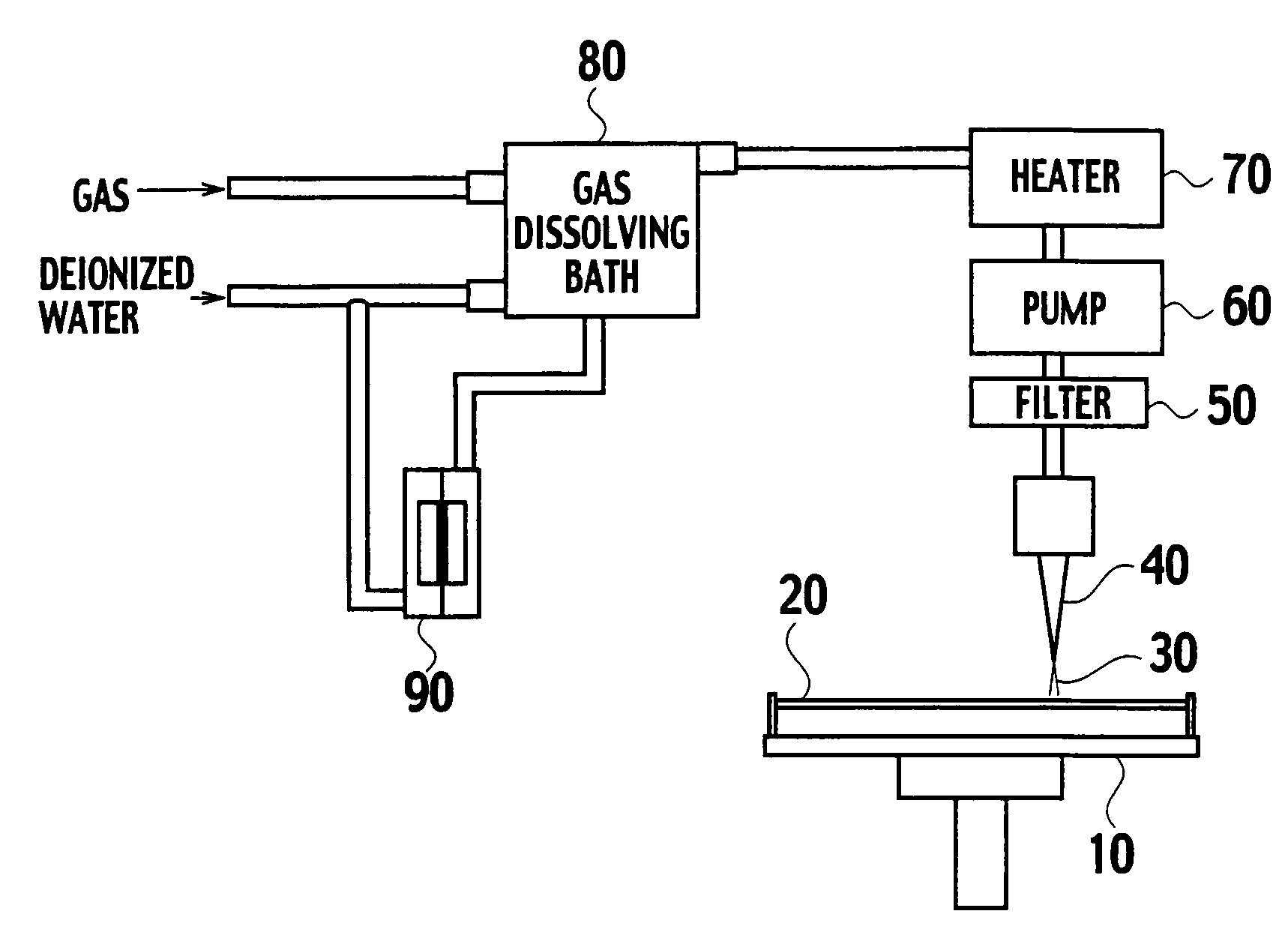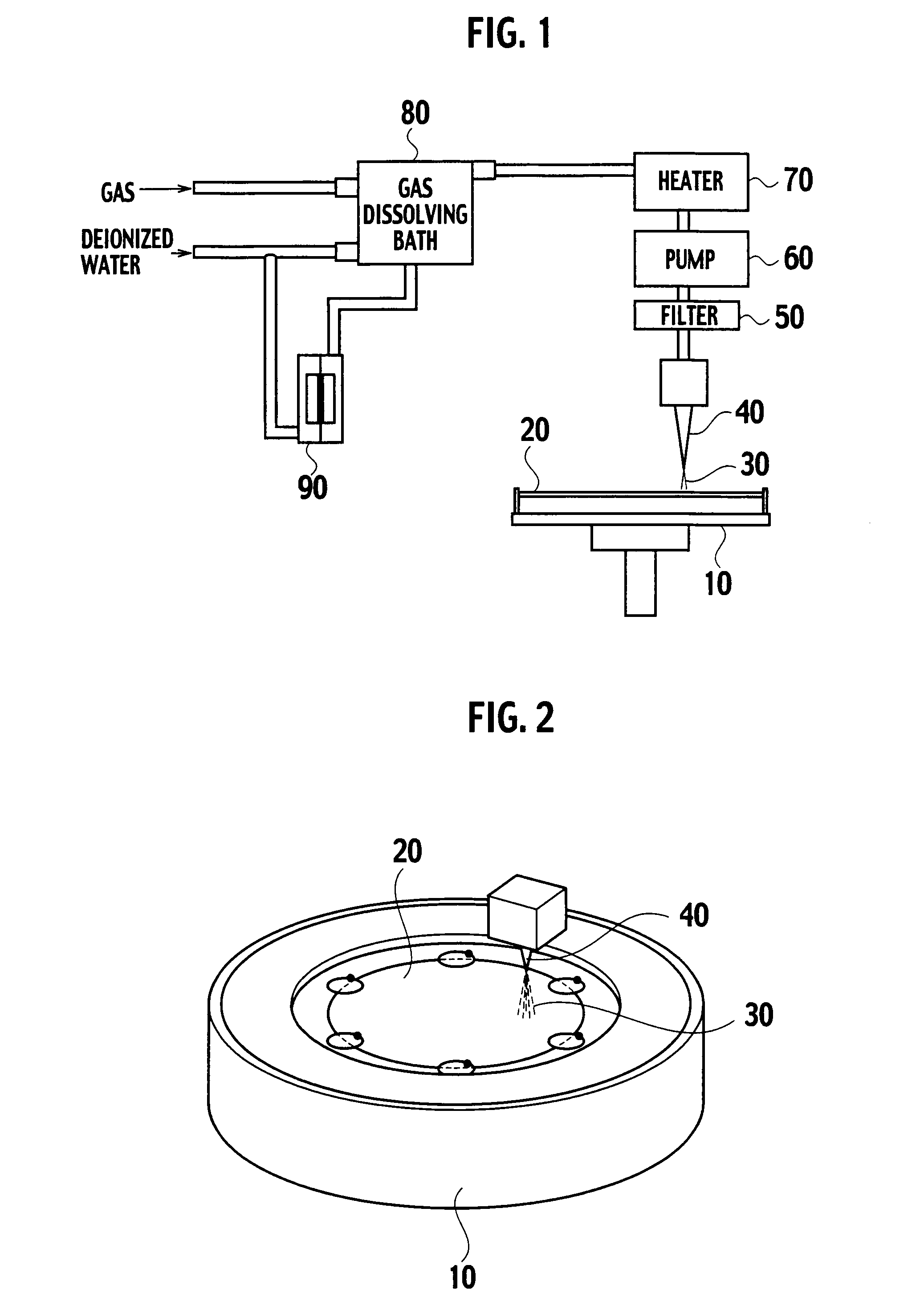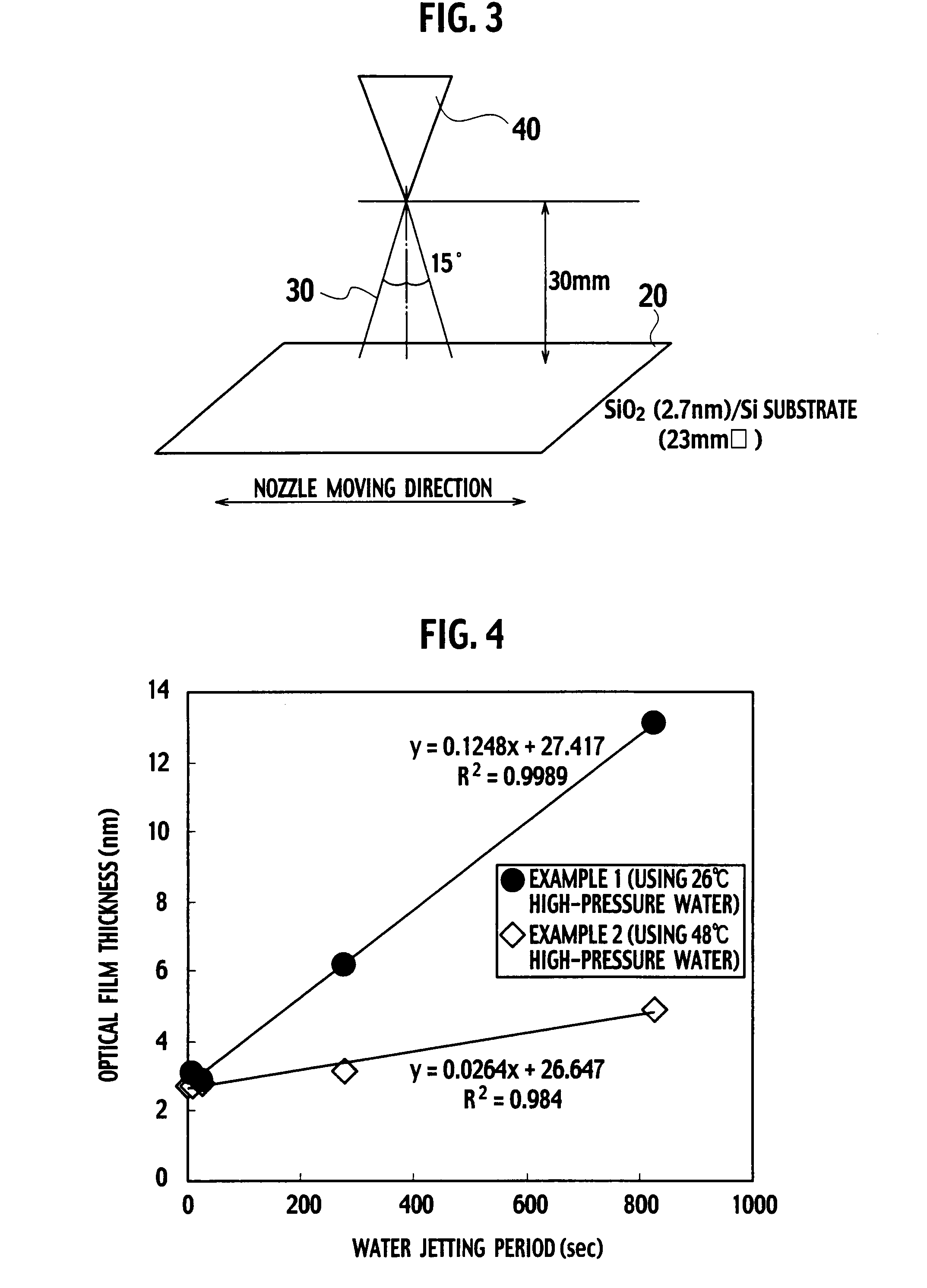Method of manufacturing oxide film and method of manufacturing semiconductor device
a manufacturing method and semiconductor technology, applied in the manufacturing process, superimposed coating process, liquid/solution decomposition chemical coating, etc., can solve the problems of difficult to obtain gate oxide film, difficult to deposit high-quality oxide film, adverse effect of oxide film quality
- Summary
- Abstract
- Description
- Claims
- Application Information
AI Technical Summary
Benefits of technology
Problems solved by technology
Method used
Image
Examples
example 1
[0058]For convenience of the evaluation, an approximately 2.7 nm thick thermal oxide film is deposited on an n-type silicon wafer by thermal treatment at 900° C. The Si substrate has a specific resistance of 1 Ωcm to 2 Ωcm. The substrate is cleaned for approximately 20 minutes using an ultrasonic washing machine (MHz).
[0059]The oxide film is deposited on the thermal oxide film of the silicon wafer. High-pressure water 30 is prepared by dissolving CO2 gas of 5 mg / l in deionized water having the specific resistance of 18 MΩcm. The high-pressure water 30 has the specific resistance of 0.5 Ωcm and pH 5.3, and is 26° C.
[0060]As shown in FIG. 3, the high-pressure water 30 is substantially vertically jetted onto the silicon wafer 20 via the nozzle 40. The pressure of the high-pressure water 30 at the outlet of the nozzle 40 is 20 MPa, and a distance between the nozzle 40 and the silicon wafer 20 is 30 mm. The high-pressure water 30 diverges approximately 15 degrees via the nozzle 40.
[0061]...
example 2
[0062]In Example 2, the high-pressure water 30 is set to be 48° C. The remaining conditions are the same as those in Example 2.
Evaluation
[0063]FIG. 4 shows the relationship between the high-pressure water jetting period and the optical film thickness of the oxide films in Examples 1 and 2.
[0064]The optical film thickness is derived by measuring a single layer model of SiO2 (n=1.46) / Si (n=3.86) using an optical coating thickness gauge. When the high-pressure water temperatures are respectively 26° C. and 48° C. in Examples 1 and 2, the thickness of the oxide films are confirmed to increase in proportion to the jetting period. In other words, jetting of the high-pressure water is effective in manufacturing the oxide film with excellent controllability. The hotter the high-pressure water, the higher the oxidizing rate. When the high-pressure water is 48° C., the oxidizing rate is assumed to be approximately 0.75 nm / min.
[0065]FIG. 5A and FIG. 5B shows results of XPS (x-ray photoelectr...
further embodiment
[0090]A modified example of the substrate treating unit (shown in FIG. 1) is shown in FIG. 12. The substrate heating unit includes a cleaning device 200, and can produce and clean oxide films.
[0091]The cleaning device 200 includes a nozzle 140 supplying a cleaning agent onto a silicon wafer 20. Deionized water is supplied from the feeder of the substrate treating unit, and the gas dissolving bath 80 of the substrate treating unit is also utilized. A chemical dispenser 110B is provided between the gas dissolving bath 80 and the nozzle 140, thereby supplying a proper amount of cleaning agent such as an etchant into an aqueous solution in which CO2 gas is dissolved, via a liquid mass flow controller 120B.
[0092]If necessary, a submerged particle counter 130 may be provided in a supply tube. The substrate stand 10 of the substrate treating unit is also used for the cleaning. In other words, cleaning of the substrate and deposition of the oxide film can be conducted in one unit.
[0093]The ...
PUM
| Property | Measurement | Unit |
|---|---|---|
| pressure | aaaaa | aaaaa |
| thick | aaaaa | aaaaa |
| pressure | aaaaa | aaaaa |
Abstract
Description
Claims
Application Information
 Login to View More
Login to View More - R&D
- Intellectual Property
- Life Sciences
- Materials
- Tech Scout
- Unparalleled Data Quality
- Higher Quality Content
- 60% Fewer Hallucinations
Browse by: Latest US Patents, China's latest patents, Technical Efficacy Thesaurus, Application Domain, Technology Topic, Popular Technical Reports.
© 2025 PatSnap. All rights reserved.Legal|Privacy policy|Modern Slavery Act Transparency Statement|Sitemap|About US| Contact US: help@patsnap.com



